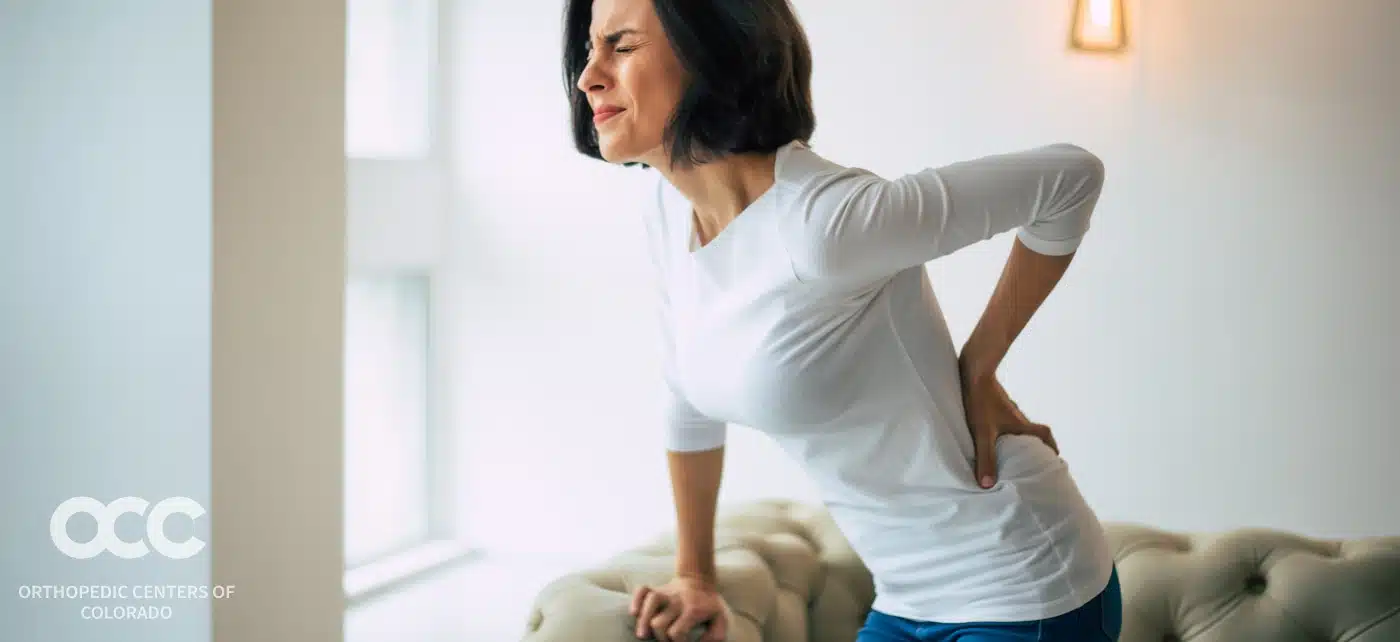Neck pain is a very common complaint. The most prevalent causes of neck pain are neck strains and neck sprains, also called cervical spine strains and sprains. The pain can be mild or severe and not always appear until hours after the injury occurs or even the next day. If left untreated, the resultant pain can be severe and even temporarily disabling to a patient’s everyday activities. That is why you should see one of the experienced orthopedic specialists at Advanced Orthopedics in Denver, Parker, or Aurora, Colorado, for a full evaluation before the pain worsens.
OVERVIEW
Neck pain ranks in the top 5 disorders in the United States, with 10-20% of people reporting incidents of neck pain—women more often than men. The risk of neck pain generally increases with age. People often consider a neck sprain and strain as the same thing, even using the terms interchangeably. Though similar symptomatically, they are different in the soft tissues they affect. A neck strain is an injury to the muscle or tendon that generally occurs when the neck muscle or tendon stretches too far and tears. A neck sprain is an injury to the ligaments in the neck. Both can impact one’s physical, social, and mental well-being.
ABOUT THE NECK
The seven bones of the spinal column in your neck are called cervical vertebrae. They are connected by an intricate system of soft tissues—muscles, tendons, and ligaments that support the head and enable it to move in a wide range. The neck, or cervical spine, is the most mobile segment of the spine, but this mobility comes at the cost of stability, making it susceptible to injuries such as neck strain and neck sprain.
WHAT ARE NECK SPRAINS AND STRAINS?
A neck sprain primarily affects the ligaments in the neck but may also affect other elements of the soft tissue like cartilage and blood vessels of bursae (fluid-filled membranes that cushion the joints). One of the most common examples would be whiplash, which is a condition that happens when sudden movement changes force the neck and upper spine to move in ways that cause injury. Because whiplash can have various effects, a grading system is as follows:
- Grade 0—no injury
- Grade 1—pain only
- Grade 2—pain plus signs of injury
- Grade 3—pain plus signs of injury and neurological effects
- Grade 4—severe pain and signs of serious or dangerous effects
A neck strain is an injury that primarily affects the muscles and tendons of the neck. Neck strains can be classified from Grade 1 to Grade 3:
- Grade 1 is a mild strain with partial tearing. Pain is typically mild.
- Grade 2 is a moderate strain where more muscle fibers are torn. May experience some muscle weakness as well as mild to moderate pain.
- Grade 3 is the most severe strain. The muscle is completely torn, and the pain is severe.
Read more about Neck Sprains & Strains on our new Orthopedic News Site – Colorado Orthopedic News. Schedule an appointment with a neck specialist today.









